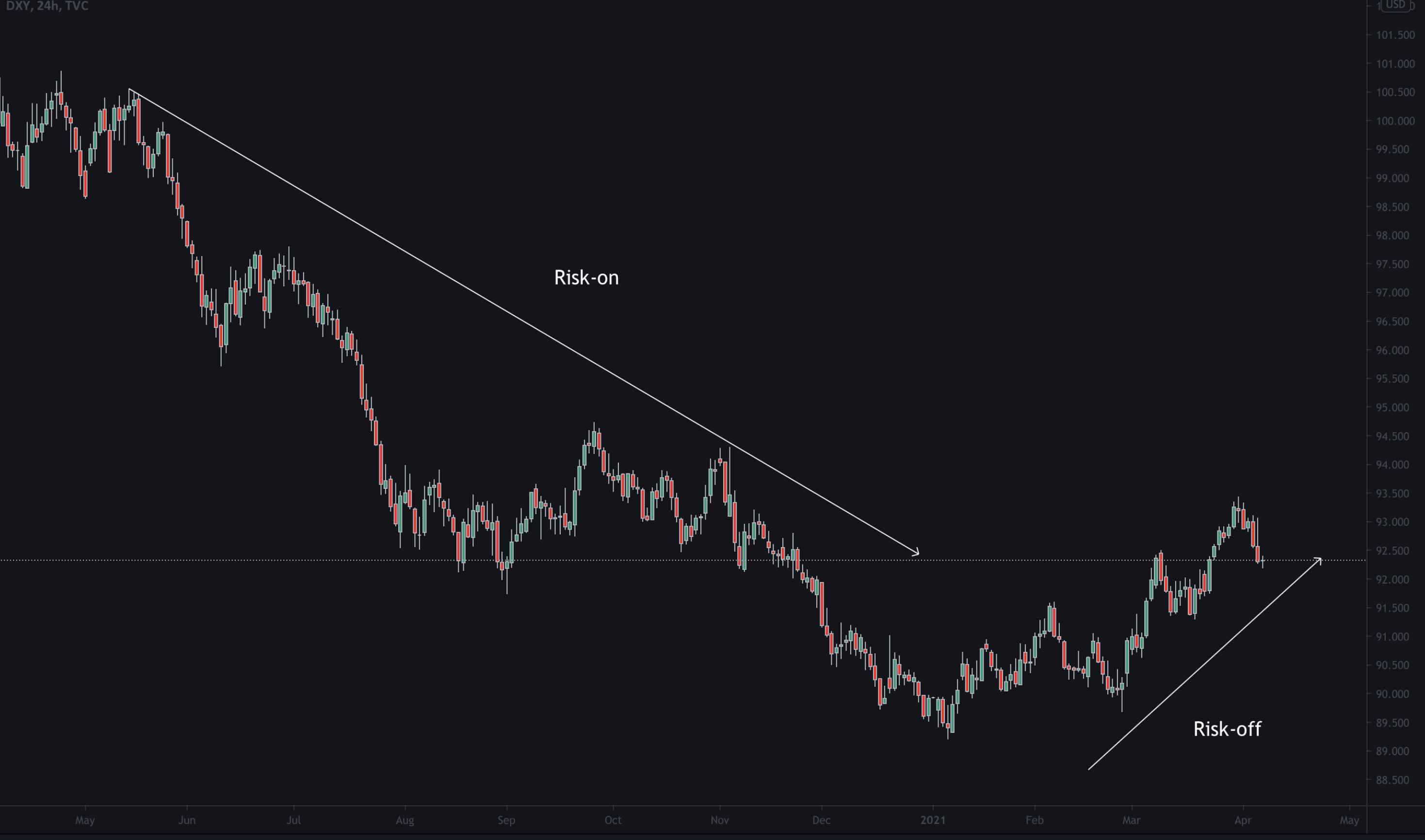Risk-on VS Risk-off
Risk on and risk-off are part of fundamental analysis and reflect on the sentiment of traders.
What they mean and how we can interpret them in our trading? We will explore that in this
lesson.
Risk-on vs risk-off
Risk-on and risk-off are market sentiments where traders and investors either take or do not
take a risk in the financial markets. We can often hear on the news that we are in risk-on or
risk-off market conditions. Understanding what this means can help us trade and choose the right
instruments to trade.
Risk-on.
When markets are in a risk-on environment, market participants feel optimistic about the
economy, so they go long on riskier assets. These are stocks, high-yielding bonds or currencies
like AUD, NZD, CAD from majors or NOK, ZAR, TRY from exotics. In commodities risk-on instruments
are oil or copper.
Risk-off.
When market participants are pessimistic about the economy or they expect some uncertainty in
the market with a negative impact, they shift from risky assets towards so-called safe havens.
Typical risk-off assets are US Treasury bonds or German bonds. For forex traders, these are the
Japanese yen and the Swiss franc which often time rally during the risk-off sentiment as traders
are unwinding carry trades. Carry trade means borrowing a safe-haven asset at a low-interest
rate and then buying a high-yielding (riskier) asset in other markets.
Why are the Japanese yen and Swiss franc considered safe-haven currencies? Because they are from
countries that own a large amount of foreign currency assets so they can sell those assets and
bring to reduce risk. The US dollar is also considered a safe-haven asset. Especially because
during risk-off sentiment traders exit their stock and other risky positions back to the US
dollar. In a commodity market, gold is considered to be a safe-haven asset.
Here is the recap of instruments and directions we should be choosing during different environments.
Trading during risk-on.
Long – stocks, commodity currencies (AUD, NZD, CAD), exotics, oil
Short – bonds, US dollar, yen, Swiss franc
Trading during risk-off.
Long – US bonds, German bonds, US dollar, yen, Swiss franc, gold
Short – stocks, commodities, non-commodity currencies
Predicting the risk-on and risk-off.
One of the great charts to predict risk appetite are VIX and dollar index.
VIX have a negative correlation with the S&P 500, which means if VIX is up, S&P500 is down.
This means that when VIX is up we look for risk-off sentiment in the market and vice versa.

The dollar index is another great sentiment indicator as it tracks the performance of US dollar
against all major currencies. When dollar is going up, we are looking for risk-off sentiment,
when the dollar is going down we are looking for a risk-on sentiment. This is simply because all
stocks and other risky instruments are cashed out back into the dollar.

empty message
empty message
empty message
empty message
empty message

